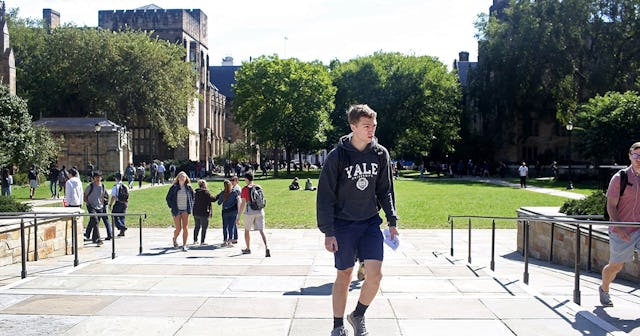Study Finds Testing Students Every 2 Days Will Allow Universities To Open Safely

Researchers also say, ‘either they open their doors to students in September or they risk serious financial consequences’
As tensions continue to run high with regard to schools reopening amid the coronavirus pandemic, a new study finds infections can be controlled on campuses if college students are tested every two days.
The study, by researchers from the Yale School of Public Health, Harvard Medical School and Massachusetts General Hospital, and published in the Journal of the American Medical Association Open Network (JAMA), used 5,000 hypothetical “students” to show how the virus may spread if only ten of those students were infected. They found the best case scenario for students returning was if they were tested every two days, “a frequency that far exceeds the current guidelines from the U.S. Centers for Disease Control and Prevention.”
Researchers found if students did not return to classrooms on campus, there could be massive financial impacts.
“The coronavirus disease 2019 (COVID-19) pandemic poses an existential threat to many U.S. residential colleges,” the JAMA researcher wrote. “Either they open their doors to students in September or they risk serious financial consequences.” But what about the consequences of having students packed together?
Instead, researchers said screening every two days using a rapid test (which has been shown to miss positive infections and give false positives) would “maintain a controllable number of COVID-19 infections” if coupled with “strict behavioral interventions,” like isolating the infected in restricted residence halls.
The study estimated screening costs would be $470 per student per semester — but didn’t consider the impact to staff and surrounding areas where campuses are located. It also said consideration must be given to those students isolated from others, especially if they find many of the students are testing false positive, but didn’t consider students living in off-campus housing, living with relatives, or interacting with the public outside of the confines of campus.
“Setting aside the logistic challenges and financial costs, administrators must anticipate the anxiety such separations may provoke among both students and their families,” the researchers wrote. “Excessive numbers of false-positive results may fuel panic and undermine confidence in the reliability of the monitoring program.” As does sending our kids back to school with no real plan for how to keep them safe.
This also doesn’t consider logistical issues, like test availability and the sheer capacity it would take to isolate students who have the virus in one central area. And if all students are being housed together, what happens to those whose test was a false positive who have now been around infected students?
But the study’s lead author, A. David Paltiel, said testing every two days would eventually weed out the false positives and that the benefits of opening schools outweigh the risks. “We believe there is a safe way for students to return to college in fall 2020,” the study said. Paltiel added: “The problem doesn’t go away simply because you don’t reopen campus. We can’t let the perfect be the enemy of the good.”
Even if schools were able to organize and afford testing every two days, controlling an outbreak would only happen with strict adherence to hand-washing, wearing masks indoors, eliminating buffet dining, reducing class sizes, and social distancing. Even then, it’s no guarantee. Just ask Major League Baseball — comprised of adults who have been sequestered and tested daily for the virus.
“Widespread access to rapid, inexpensive testing is a key ingredient of reopening colleges safely,” JAMA said of the study. “Nevertheless, the authors’ findings should be contextualized and their limitations recognized before they are translated into policy recommendations.”